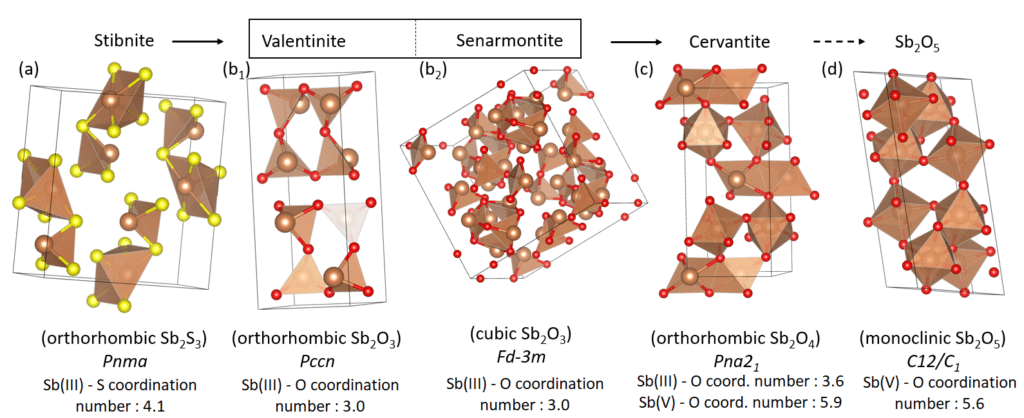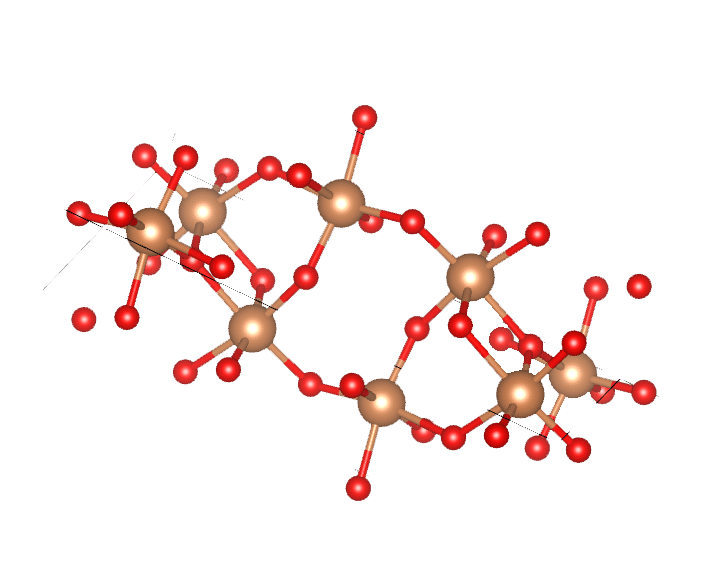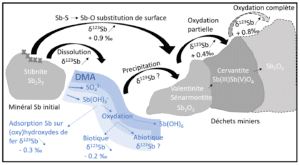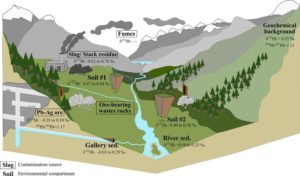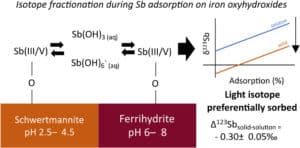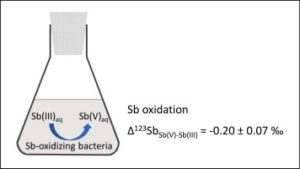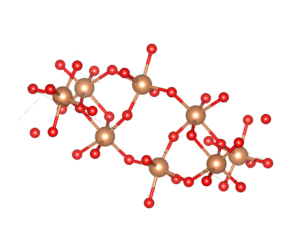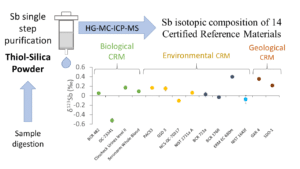Highlights
First estimation of equilibrium Sb isotope fractionation factors among Sb minerals.
PBEsol pseudopotential best reproduces Sb mineral lattices and Raman frequencies.
Factors affecting Sb isotope fractionation: Sb oxidation > change in Sb first-neighbour > polyhedral Sb
 O distortion.
O distortion.Theoretical Sb isotope fractionation extends over 2.3 ‰ at 22°C, similar to the observed range of natural variations.
Secondary Sb minerals are isotopically heavier than stibnite, the main Sb ore.
Abstract
Antimony (Sb) isotopes are gaining increasing interest for their potential as geochemical tracers in geological, environmental and archaeological studies. However, little is known about the parameters controlling Sb isotope fractionation, which is essential to interpret variations of isotopic signature in natural systems. In this study, equilibrium mass-dependent isotope fractionation factors (β-factor) were calculated between different Sb-bearing minerals commonly found in mining environments including primary Sb sulphide (stibnite Sb2S3) and its oxidation products (valentinite Sb2O3, senarmontite Sb2O3, cervantite Sb2O4) and synthetic antimony pentoxide Sb2O5. First-principles calculations within the Density Functional Theory (DFT) were performed with different functionals to test the robustness of the method. Among the studied minerals, stibnite has the lowest β-factor (ln(β) = 0.71 ‰ at 22°C), then β-factors progressively increase from valentinite (ln(β) = 1.64 ‰ at 22°C), to senarmontite (ln(β) = 1.80 ‰ at 22°C), cervantite (ln(β) = 2.20 ‰ at 22°C) and antimony pentoxide (ln(β) = 3.03 ‰ at 22°C). The factors that most fractionate Sb isotopes are found to be i) the change of Sb oxidation state (Sb isotope ratio in Sb(V)-bearing minerals is higher than in Sb(III)-bearing minerals), ii) the change of first neighbour of Sb (Sb isotope ratio in Sb O bonds is higher than in Sb
O bonds is higher than in Sb S bonds) and iii) distortion of the atomic Sb
S bonds) and iii) distortion of the atomic Sb O polyhedrons. The negligible differences in the β-factors obtained with different functionals showed the robustness of the approach for the calculation of β-factors, despite differences in the calculated mineral lattice and Raman frequencies. The results of this study provide a theoretical basis to interpret natural Sb isotope variations. The results suggest that a significant enrichment in the heavy isotope could occur during oxidative dissolution of stibnite and subsequent precipitation of Sb(III) and Sb(V) oxides in sulphide environments. More generally, this work strongly supports that Sb isotopes may be a useful tracer of Sb transformation processes in nature.
O polyhedrons. The negligible differences in the β-factors obtained with different functionals showed the robustness of the approach for the calculation of β-factors, despite differences in the calculated mineral lattice and Raman frequencies. The results of this study provide a theoretical basis to interpret natural Sb isotope variations. The results suggest that a significant enrichment in the heavy isotope could occur during oxidative dissolution of stibnite and subsequent precipitation of Sb(III) and Sb(V) oxides in sulphide environments. More generally, this work strongly supports that Sb isotopes may be a useful tracer of Sb transformation processes in nature.
